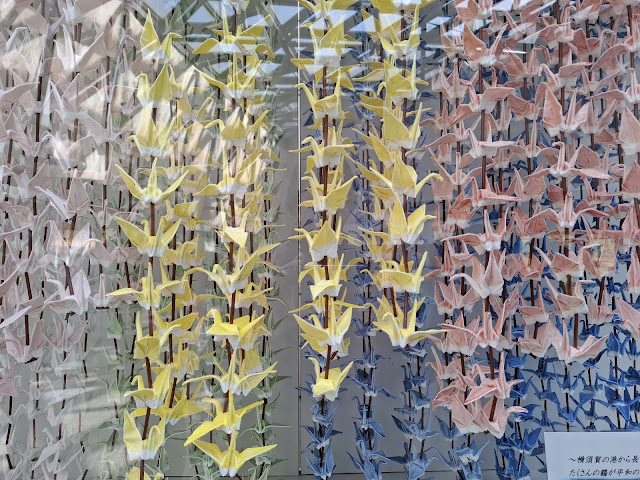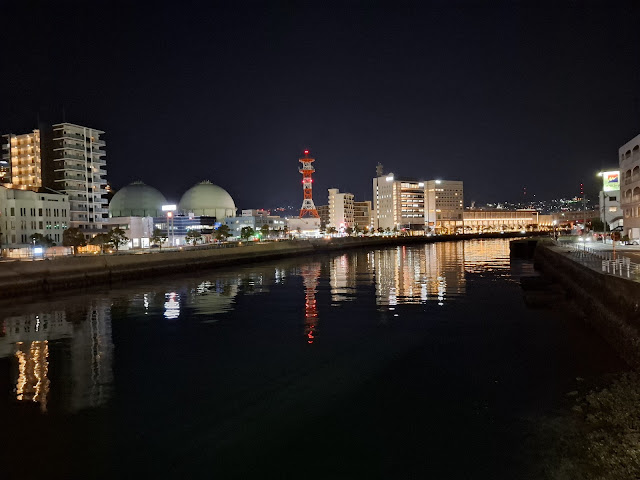Japan Day 25: The Peace Park, The Ropeway
I went for a walk in the cold, still morning in Nagasaki.
Less people come to Nagasaki than come to Hiroshima, although progress into the Museum was still clogged up with passengers from the Cunard cruise ship that docked that morning. The Museum was nonetheless equally confronting and again silent, apart from the recorded voices of survivors telling their story and the susseration of people moving through the space.
 |
| When the clock stopped. |
Nagasaki was the home of many secret Christians during Japan's 250 year ban on Christianity. When the ban was lifted in the late 19th century constructon started on the Urakami Cathedral which, with twin bell towers completed in 1925, became the largest Cathedral in Asia. 20 years later along came the atomic bomb and the Urakami Cathedral was one of the few buildings not totally destroyed, with remnants both in the Museum and the Peace Park.
Beyond the Hall lay the Peace Park, brimming with blossoms, scultures, and a modest marker for the hypocentre.
A large statue dominated the end of the park, symbolising an ongoing quest for peace.
From the park we took a short walk across the river to the rebuilt Cathedral, the splendid interior of which we weren't allowed to photograph.
 |
| Tulips on the way to the Cathedral. |
 |
| Statues that survived the blast stood guard. |
Then we went home to rest and process what we'd seen, before heading up the Nagasaki ropeway to the Mt Inasa overlook. Packed cosily in a gondola, we swung slowly up the mountain in evening light, a froth of blossoms below us marking the road up the hill.
Up at the top there were a hundred ways to part with money: a slope car back to the car park; a souvenir shop; a Cafe. The walk up to the top of the observation deck was free, albeit crowded by everyone who had come to see not the rather underwhelming sunset, but the lights of the city below as they twinkled to life.
 |
| Looking west from Mt Inasa with the lights of the Cunard cruise hip heading out to sea. |
At the top of the mountain even the communications towers put on a show, wearing their spring colours for the season.
Back at the bottom of the hill we walked home over the river. Nagasaki was all dressed up in its best nightwear, Chinatown bursting with life, families bustling home to bed and youth heading out to party. Nagasaki, like Hiroshima, refused to be defined by its tragedy and focussed instead on a future that, if this one evening was anything to go by, was bright.

















.JPG)

.JPG)
Comments
Post a Comment